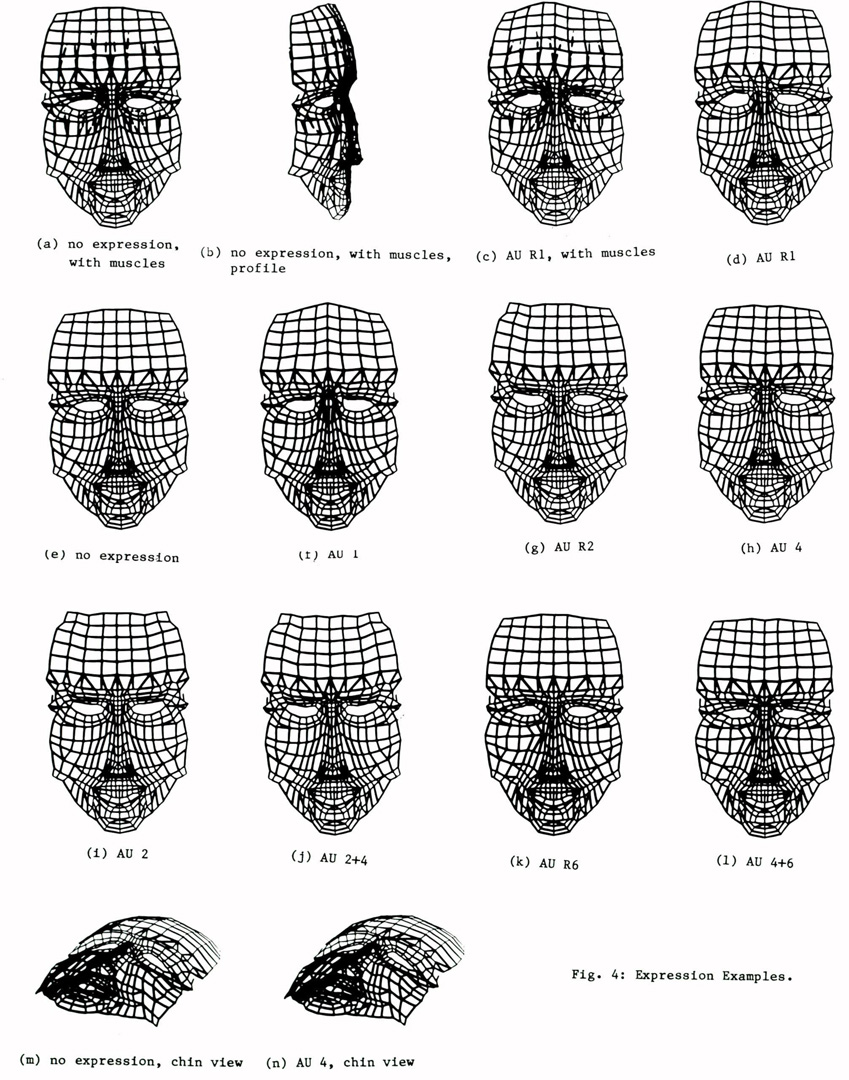“Animating facial expressions” by Platt and Badler
Conference:
Type(s):
Title:
- Animating facial expressions
Presenter(s)/Author(s):
Abstract:
Recognition and simulation of actions performable on rigidly-jointed actors such as human bodies have been the subject of our research for some time. One part of an ongoing effort towards a total human movement simulator is to develop a system to perform the actions of American Sign Language (ASL). However, one of the “channels” of ASL communication, the face, presents problems which are not well handled by a rigid model. An integrated system for an internal representation and simulation of the face is presented, along with a proposed image analysis model. Results from an implementation of the internal model and simulation modules are presented, as well as comments on the future of computer controlled recognition of facial actions. We conclude with a discussion on extensions of the system, covering relations between flexible masses and rigid (jointed) ones. Applications of this theory into constrained actions, such as across rigid nonmoving sheets of bone (forehead, eyes) are also discussed.
References:
1. Badler, Norman I., J. O’Rourke, S. Platt, and M. A. Morris. Human Movement Understanding: A Variety of Perspectives. Proceedings of the First Annual National Conference of Artificial Intelligence, 1980, pp. 53-55.
2. Badler, Norman I., Joseph O’Rourke, Stephen Smoliar, and Lynne Webber. The Simulation of Human Movement by Computer, Movement Project Report No. 14, Department of Computer and Information Science, University of Pennsylvania, Philadelphia, PA. September 1978.
3. Badler, Norman I., and Stephen Smoliar. Digital Representation of Human Movements. ACM Computing Surveys 11, March 1979, pp. 19-38.
4. Baker, Charolette. Regulators and Turn-Taking in American Sign Language Discourse, from New Perspectives on American Sign Language, Academic Press, 1977.
5. Baker, Charolette, and Carol A. Padden. Focusing on the Nonmanual Components of American Sign Language, from Understanding Language through Sign Language Research, Academic Press, 1978.
6. Birdwhistell, Ray L. Kinesics and Context, University of Pennsylvania Press, Philadelphia, PA. 1970
7. Calvert, T. W, J. Chapman, and A. Patla. The Integration of Subjective and Objective Data in the Animation of Human Movement. Computer Graphics, vol. 14, no. 3, July 1980.
8. Ekman, P. and W. Friesen. Facial Action Coding System. Consulting Psychologists Press, Palo Alto, CA. 1978.
9. Hackathorn, Ronald J. ANIMA III—A 3-D Color Animation System. Computer Graphics, vol. 11 no. 2, Summer 1977
10. Hutchinson, Ann. Labanotation. New York: Theatre Arts Books. 1970.
11. O’Rourke, Joseph P. and N. I. Badler. Model-Based Image Analysis of Human Motion Using Constraint Propagation. IEEE PAMI, 2(6), Nov. 1980, pp 522-536.
12. Parke, Frederic I., A Parametric Model for Human Faces. Ph. D. dissertation, University of Utah, Department of Computer Science, 1974.
13. Platt, Stephen M, A Computer Model for the Simulation of Human Faces. MSE thesis, Department of Computer and Information Science, University of Pennsylvania, 1980
14. Sutton, Valerie. Sutton Movement Shorthand: Writing Tool for Research, The Movement Shorthand Society Press, Newport Beach, CA. 1978.





